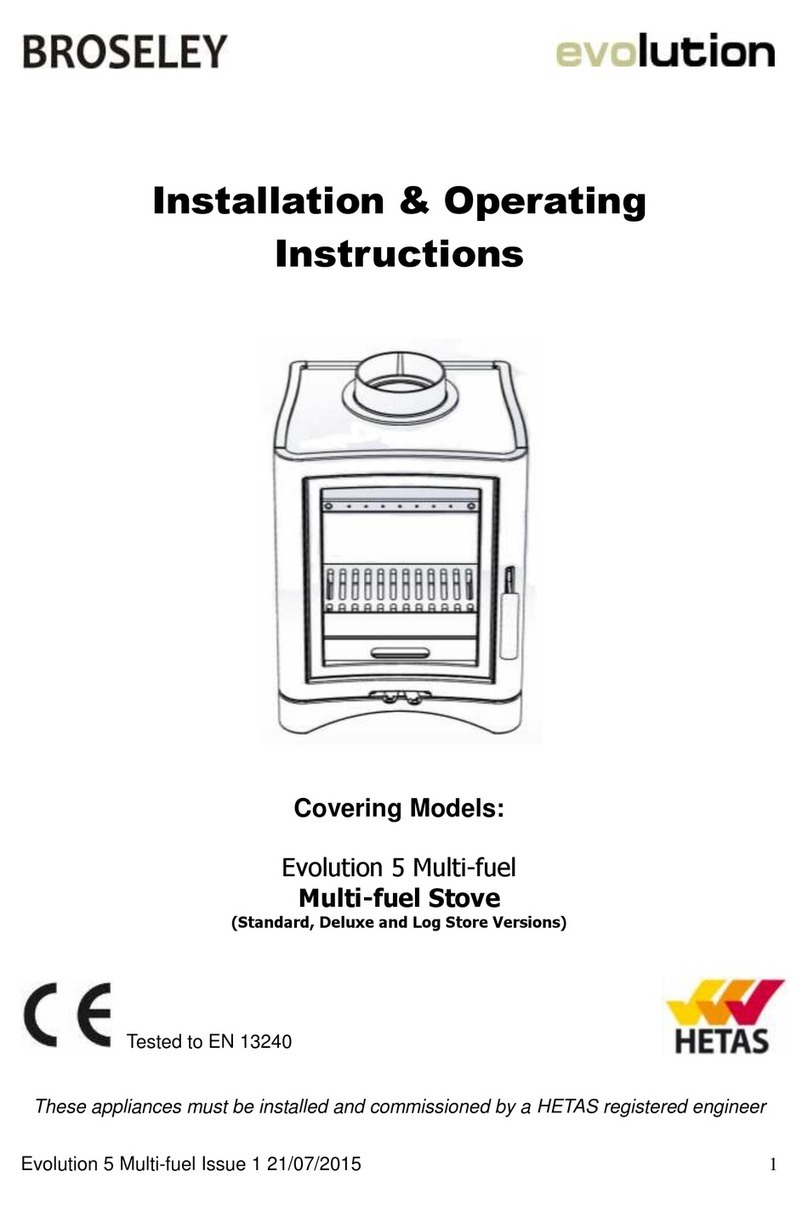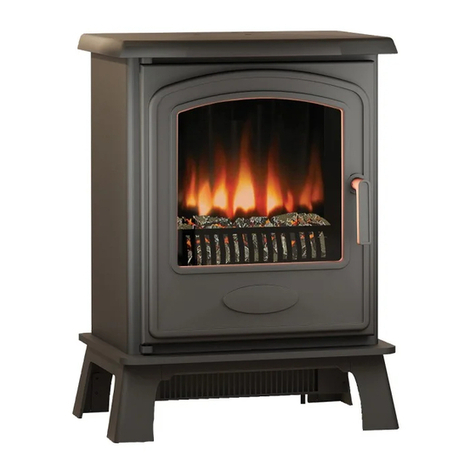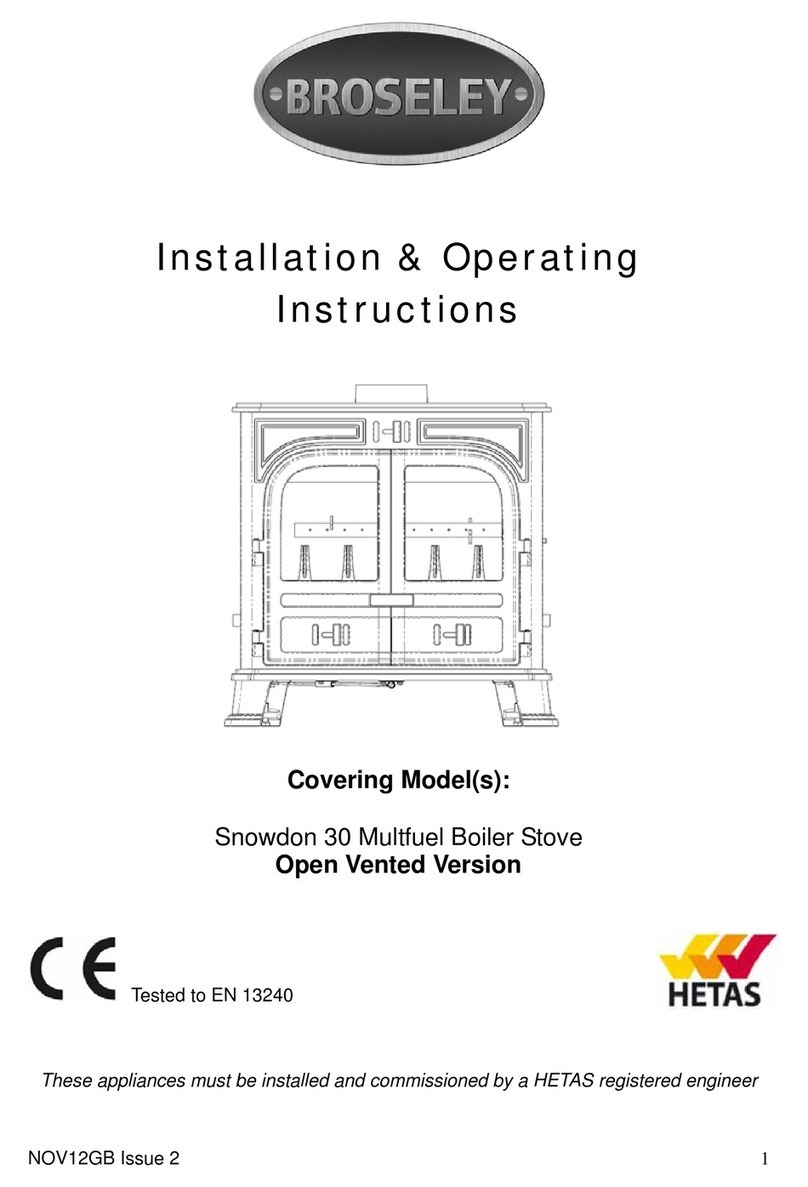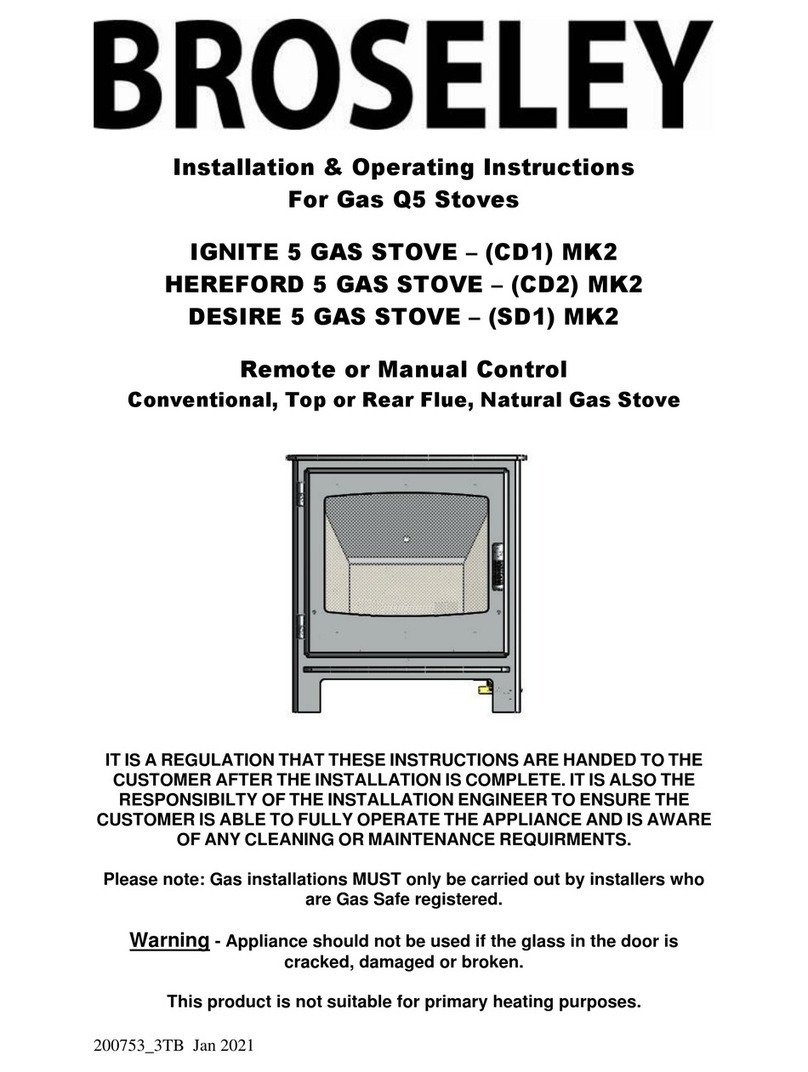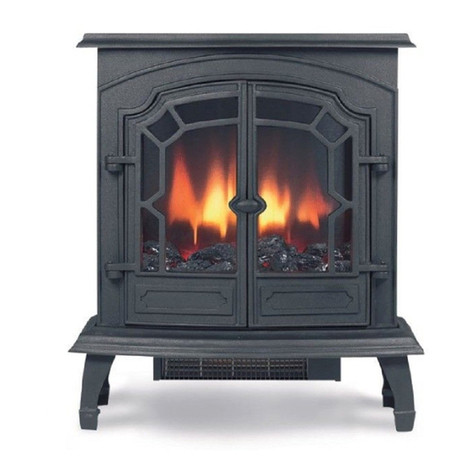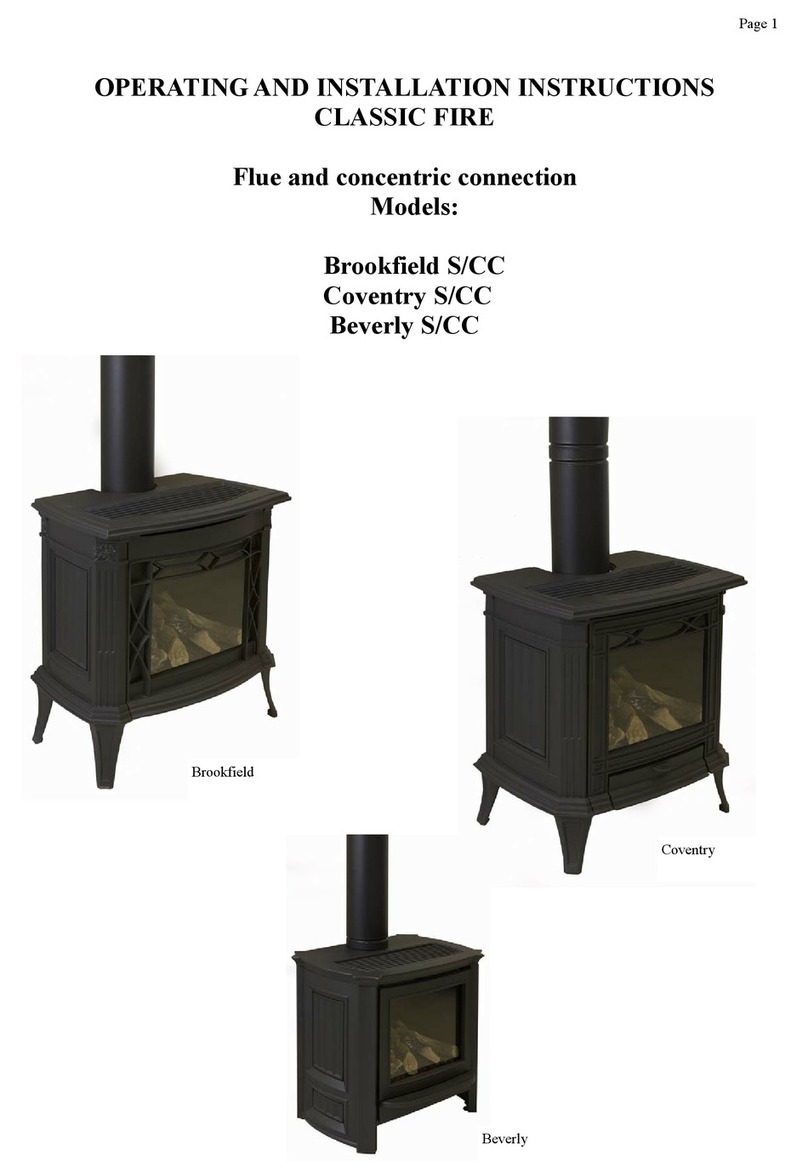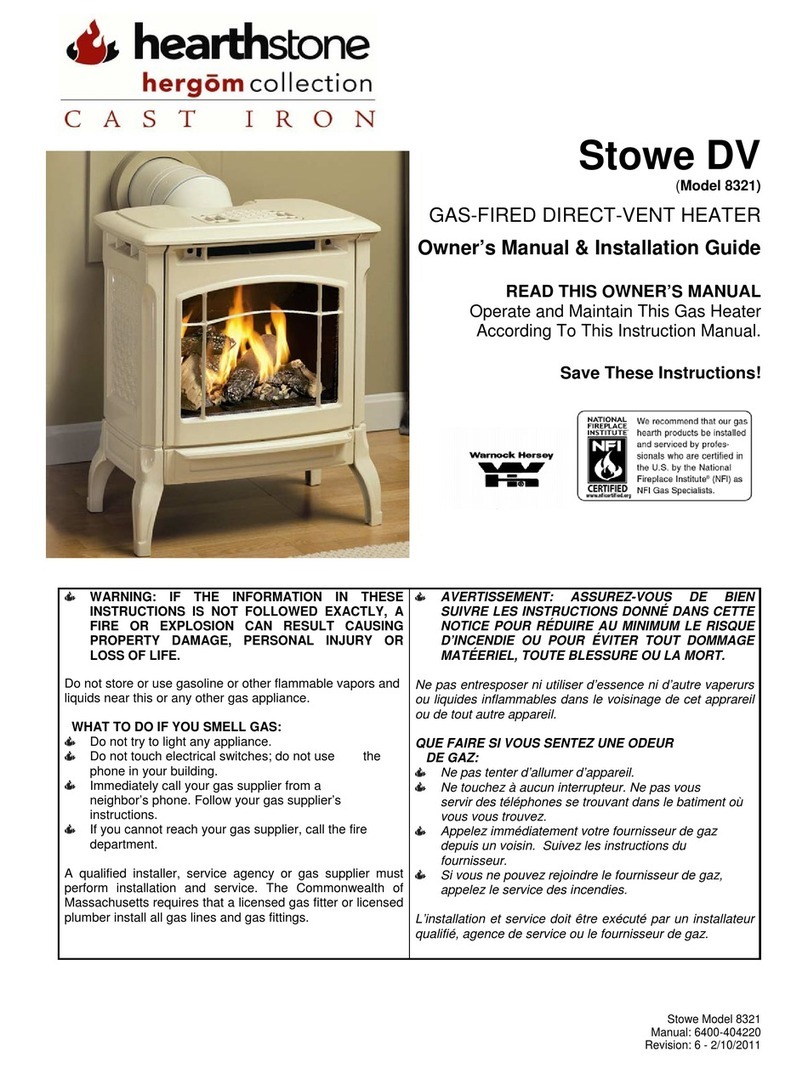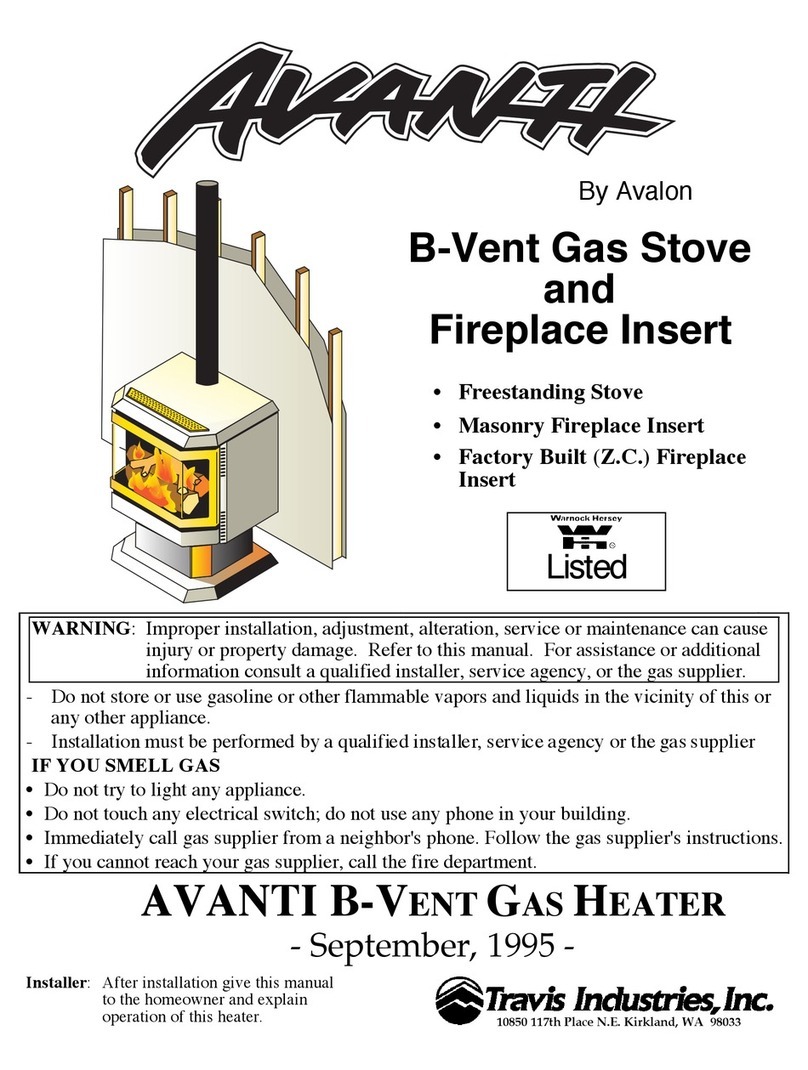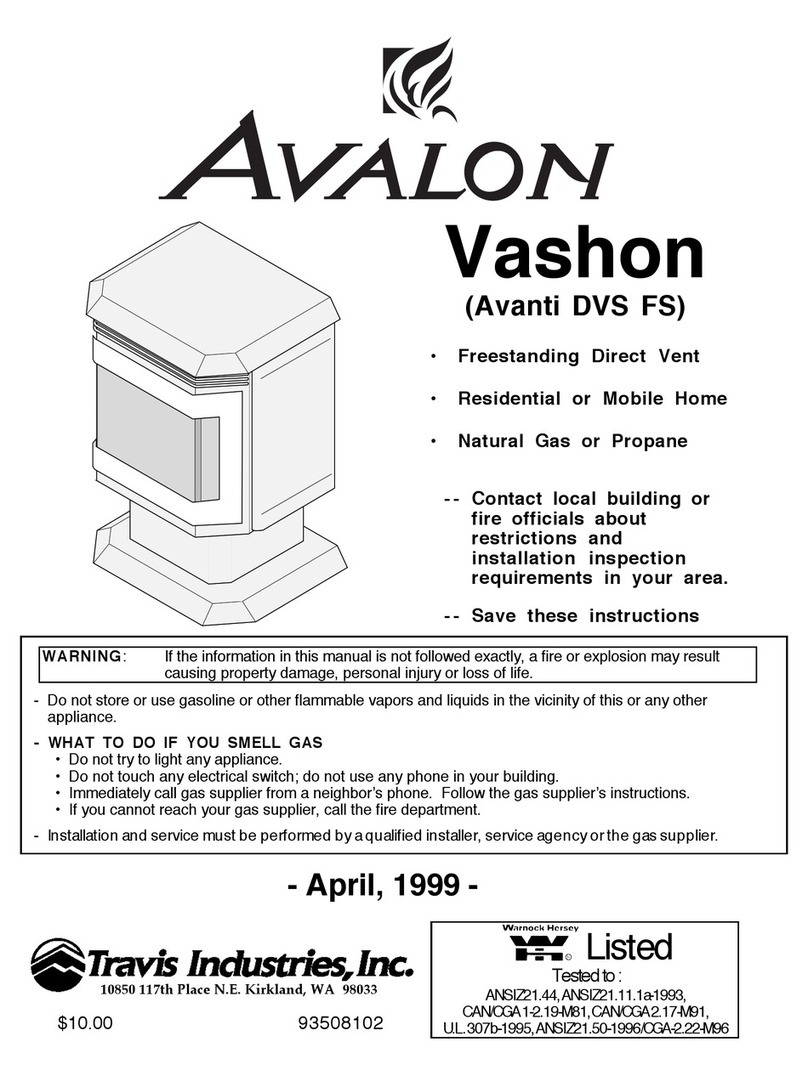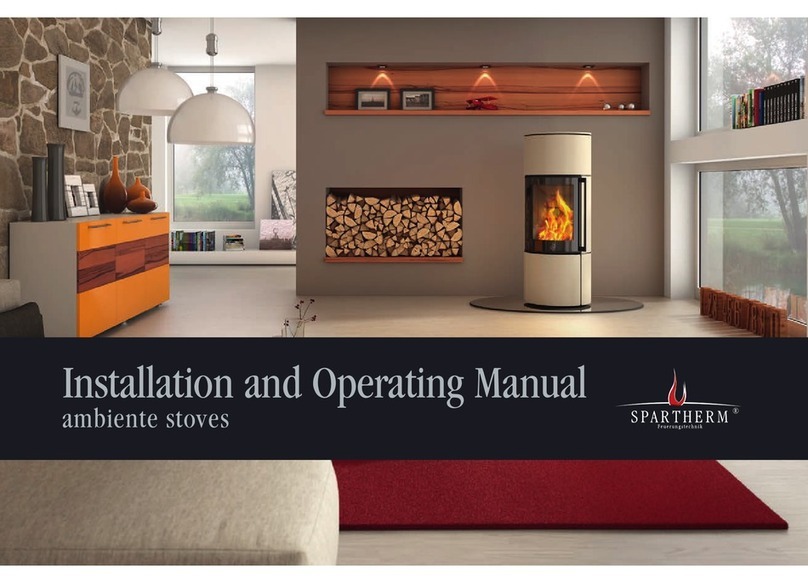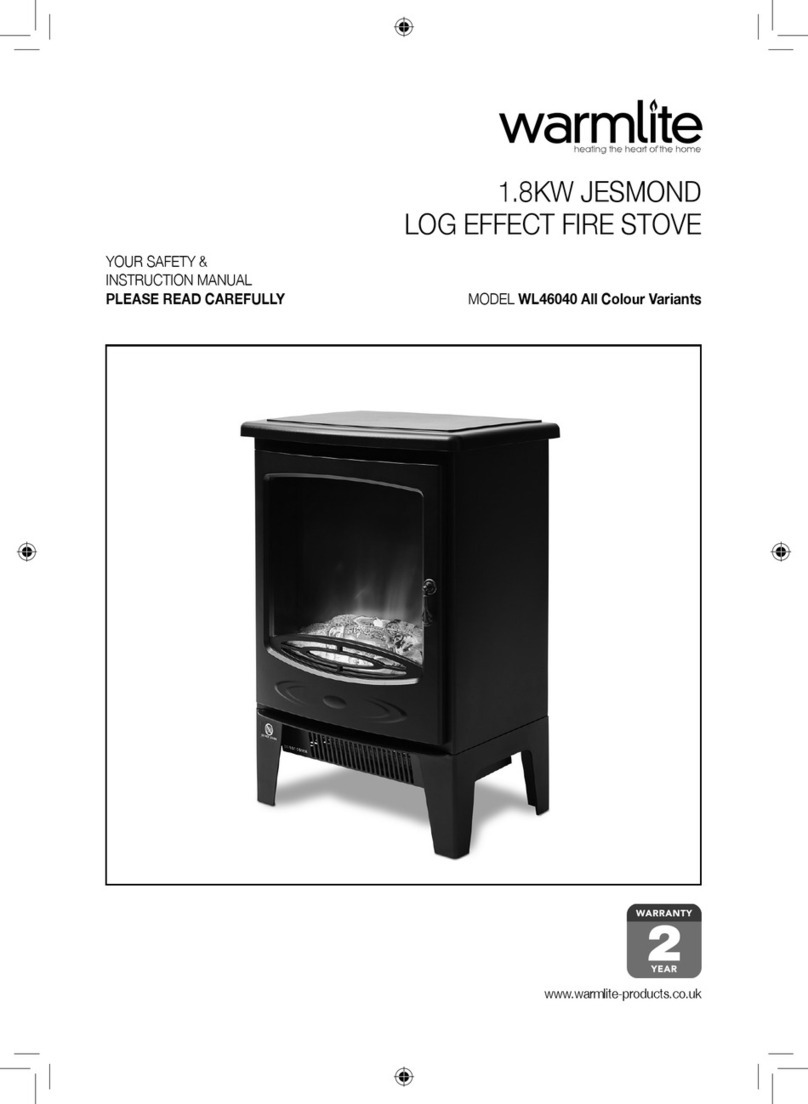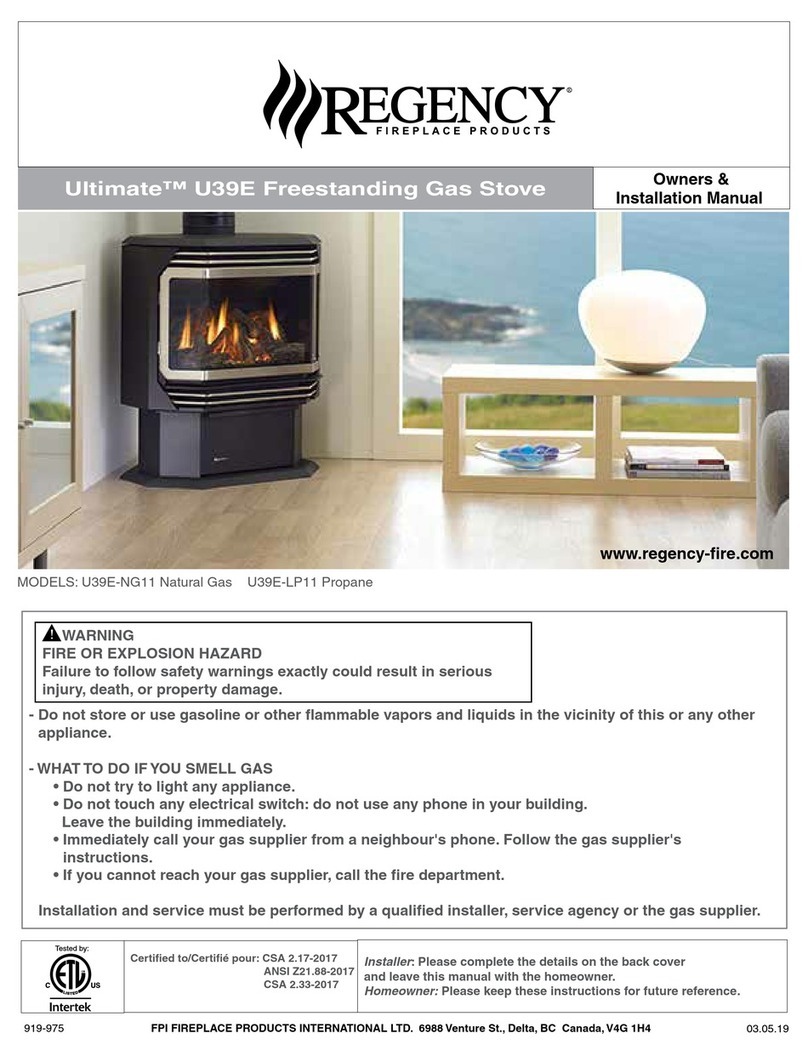5. A properly built masonry or factory installed chimney, preferably with a
height of 4 metres (15 feet) or more, should ensure a consistent draught (draw)
under a variety of weather conditions. This stove requires a chimney (not the
flue pipe) with a minimum diameter of 150mm (6”). If the chimney and cavity
are larger, this may result in less than optimum performance to an extent
where it may require a liner to improve the draw and performance of the stove.
Certain cowls improve the draw of a chimney. If the draw on the chimney is
excessive, then a flue damper will help to slow this down. An excessive draw
will cause the stove to run very hot (called over-firing) and may cause internal
components of the stove to wear out quicker. It is recommended that the
chimney is swept at least once a year and more usually twice a year unless
smokeless fuels are used.
6. The flue spigot (pre fibre roped) provided with the stove can be fitted to the
rear or the top of the stove and must be tightly screwed to the opening with the
three screws supplied. Air must not be drawn in at or allowed to escape from
this point, which will affect the stoves performance and may be hazardous to
health.
7. To get the best transfer of heat from the stove into the room there are two
factors to consider. Firstly, the flue pipe from the stove must pass through a
‘register plate’. A register plate is the term used for a flat plate which is
installed at the chimney opening (usually out of sight) to prevent heat from the
stove being drawn up the chimney to waste. This closes the chimney to the
room. The register plate must be made of a non-combustible material such as
steel, Asbestolux, or Masterboard. It is advisable to seal this register plate to
the walls of the chimney and also around the flue pipe. Provision of a trap
door in the closure plate or a soot door in the flue for access to clean the
chimney from time to time is worthwhile.
8. The more forward the stove can be sited on the hearth, the more heat will be
radiated into the room. To achieve this, the back flue-outlet is favoured, but
please remember the 600mm clearance from combustible materials.
9. Inside the stove is a grate, left and right firebricks, a rear firebrick and a top
baffle. The firebricks are interlocking and self supporting and do not need
further fixing. The grate installs through the main loading door.
The top baffle has two lugs at a 45 degree angle and two ears. The lugs sit on
top of the rear baffle and the ears hold the baffle at an angle of 45 degrees
supported by two ledges that are cast into the stove sides. All parts install with
the flat surface towards the fire. During transit, the top baffle may not be in the
correct position and must be fitted before use.
Do not use the stove without the top baffle in place.
10. There are a number of decorative door options. These are held in place with
screws put in from the rear of the loading door. It may be necessary to remove
the glass and rope to change the door detail. Heat treated glass has sharp edges
and is fragile. Take care when handling. When refitting, ensure that the rope
seals are in place and that a good seal is made but do not over-tighten.
The performance of the stove may be affected if the rope seals are missing, as
this will introduce uncontrolled combustion air making the stove run too fast.
